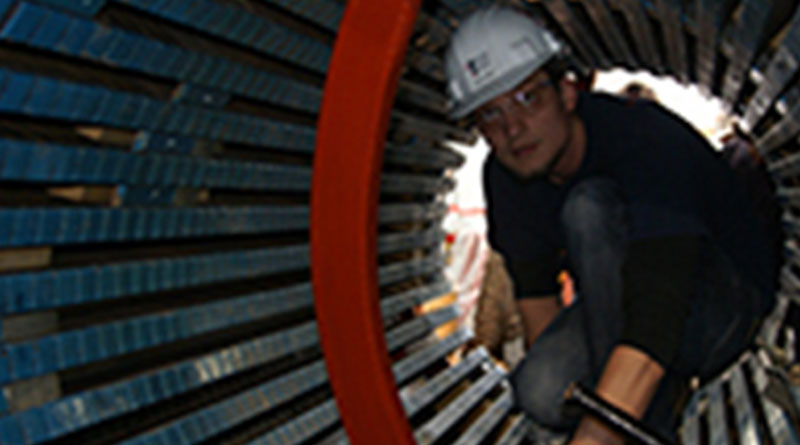Power plants are instrumental in generating energy from the Earth’s resources to power most utilities around the world. Multiple power plants operate coal, nuclear energy, and water as primary resources for electricity generation. Globally, the energy consumption rate increased in India (+0.8%), Russia (+1.8%), and Australia (6.3%) in 2019. However, the growth rate decreased in most OECD countries like the USA, South Korea, and Canada, as visible in this global 2019 report.
Such rise and flow of growth rates occur annually, with coal power plants dominating a vast majority of global energy output.
In 2019, coal-centric power consumption ranked third highest in the world. In regards to supplying high-quality energy globally, the power plant operators need to focus on proper maintenance of the Power Plant generator parts. This includes making smart solutions based on detailed inspection and operation data of the generators and steam turbines. It is important to monitor the system parts to ensure limited unplanned downtime, disruptions, and risk of failure.
Operation of steam turbines and generators
The main operation of coal-fired power plants is burning coal inside a boiler to convert the hot steam energy into electricity. The pressurized steam flows into the steam turbine which uses rotational energy to spin the generator. This occurs over several stages; the boiler-generated steam passes into the-high pressure turbine. The steam cools down in this turbine and condenses into water.
After the high-pressure turbines, the steam passed to the reheater where it is reheated. Thereafter, it passes via the intermediate pressure turbines and enters into the low-pressure section. The rotation energy passes through the common shaft into the generator; this converts the energy into electricity. Overall, the process occurs over multiple steps and repetitions. It is necessary to secure the single transmission between the power plant and the control room for effective operation.
The goal of maintenance and monitoring
Power plant operators need to monitor the lubrication system of the common shaft that joins the generator and turbine. It is essential to check the optimal flow rate and oil pressure; this would ensure the material does not suffer damages due to improper layering of oil. Excessive oil temperature can result in lowered viscosity. Also, the rotational speed show maintains a specific trip value; otherwise, the high centrifugal forces can harm the generator and turbine condition.
To note, the market investment in installed coal-fired generation plants is expected to grow. Multiple coal-fired power plants with a total of 180 gigawatts capacity started constructing in 2020. Among all the available and upcoming coal-centric plants, many use large steam turbine generators. These include two and five individual casings; an outage in any can last many weeks and incur high costs. Power plant operators, thus, need to monitor them regularly for an extended duration. Also, it is important to disregard complete overhauling of the casings as a plan, unless there is a powerful economic or technical reason.
Any outage in the generator performance after a long period of service would take longer to handle, as distortions might have occurred already. Frequent maintenance scheduling would enable operators to study and determine which casing studs or other parts require replacement. Performance testing from the earliest would ensure better internal condition management; operators can refer to the test results to decide the overhaul extent.
Common issues
Usually, a large thermoelectric power plant would generate approximately 11 million tons of electricity annually. Steam turbine generators in such power plants operate over several months. The continuous operation causes steady output, which deposits steam on the fixed as well as moving blades. However, such deposition causes a drop in efficiency and output, since the energy transfer is limited and steam flow is restricted. Loads in sets notice lower impact due to the frequent blade washing effect.
In some cases, the critical shaft bending speed and coast-down during service results in the internal seals rubbing directly. This enlarges the flow area, which lowers the amount of energy extraction from steam. Internal leakages in the casing may also occur. Turbine designs of Intermediate Pressure and High-Pressure casing sections notice these effects the most.
Solutions of Monitoring and Control
Power plants can use frequency converters to calculate the rotational speed for early damage detection and prevention. For oil temperature checking, using temperature converters that have trip values for potentiometers, thermocouples, and resistance thermometers is helpful. Moreover, devices for transmitter supply can monitor the oil flow rate and oil pressure rate inside the pumps. Retractable packings are useful for avoiding shaft rubbing; these go through shaft bending at critical speeds and can withstand the high velocity.
Vibration analysis is essential for rotor line condition shaft rubbing detection. However, it cannot test the extent of deposition or internal damage. Frequent performance analysis as a condition monitoring technique is useful for evaluating fuel consumption increase and reduced output. Power plant operators can use the results to determine the necessary duration for restorative maintenance.
Conclusion
Overall, it is necessary to frequently maintain and check the steam turbines and generator internal components of power plants. Proper maintenance would ensure long-time performance capability and powerful energy generation.

Namaste UI collaborates closely with clients to develop tailored guest posting strategies that align with their unique goals and target audiences. Their commitment to delivering high-quality, niche-specific content ensures that each guest post not only meets but exceeds the expectations of both clients and the hosting platforms. Connect with us on social media for the latest updates on guest posting trends, outreach strategies, and digital marketing tips. For any types of guest posting services, contact us on info[at]namasteui.com.

